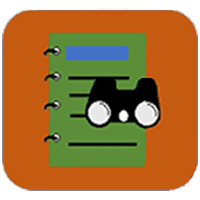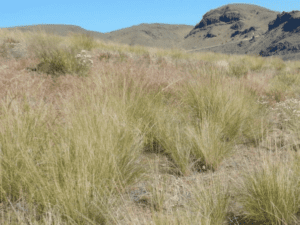Field Guide
View field guide.
The National Wildfire Coordinating Group (NWCG) Wildland Urban Interface Mitigation Field Guide, PMS 053 provides mitigation practitioners at all experience levels with recommendations on the most effective and efficient ways to accomplish mitigation work in communities at risk to wildfire damage or destruction. The content in this guide was written in coordination with the NWCG Standards for Mitigation in the Wildland Urban Interface, PMS 052.
View guidebook.
It’s difficult to put into words the profoundly life – changing experience of surviving a wildfire. After the flames are out, the road to recovery is about more than filing claims, calls with agencies, clean-up, and what will feel like a never-ending to-do list. It’s about the emotional healing of accepting what was lost, forgiving yourself for what you wish you would have done, and remember to have faith again in the future ahead. The smiles will eventually outweigh the tears— you’ll emerge stronger and be amazed by your resilience. No two recovery journeys are the same, and each present unique circumstances. Colorado State University Extension has gathered a variety of resources based on insights from subject matter experts and survivors to provide guidance on the road to recovery. We hope you find this toolkit useful as you embark on the journey ahead.
View guide. (Click on the word “guide” to view it.)
A photo guide for use in classifying fire behavior fuel models from the Scott and Burgan (2005) library that are common to the sagebrush steppe of the American west. The goal of this guide is to enable the quick and easy classification of fuel models in sagebrush steppe to –
- enhance the mapping of fuel beds in an increasingly fire prone region,
- guide the evaluation of fuel and post-fire restoration treatments, and
- improve our understanding of fuel conditions during times of the year when wildfire preparedness is greatest (i.e. hot and dry).
View guide.
This guide identifies seven primary components that largely determine the outcomes of vegetation treatments to reduce fuels and maintain or increase resilience to disturbance and resistance to invasive annual plants. The components are (1) characteristics of the ecological type, (2) current, pre-treatment vegetation, (3) disturbance and management history, (4) fuel characteristics and appropriate treatments, (4) treatment severity and ecological response, (6) seeding considerations, and (7) post-treatment monitoring and management. Key questions and a set of tools are provided to assess the components. The guide provides information to (1) evaluate resilience and resistance for potential treatment areas, (2) determine likely effects of treatments on fuels, fire behavior, and ecological response, and (3) select appropriate treatments, including the need to seed. An evaluation score sheet is included for assessing relative resilience and resistance and seeding needs. The Pine Valley Ranger District of the Dixie National Forest, part of a USDA Forest Service “Wildfire Crisis Landscape,” is used as a case study. Maps and data summaries included for the district are dominant shrubland and pinyon-juniper ecological types, burn probabilities, cover of the invasive annual, cheatgrass, proxy soil temperature and moisture regimes, relative resilience and resistance, pinyon-juniper stand characteristics, and habit for mule deer and pinyon jay.
View guide.
This tool is designed to rapidly assess and manage perennial and intermittent lotic (flowing) water systems. Lentic, or still-water, systems, such as wet meadows, swales, seeps and marshes, are inherently different.
This guide is not an instruction manual but a decision-support tool for understanding how riparian areas such as creeks, rivers and streams should function. This guide helps managers determine whether a riparian area is functioning properly and how to restore or maintain proper function. A wide variety of natural resource professionals or land managers will find this guide helpful because it provides a framework for land managers to identify, discuss and address threats to riparian resources.
The goals of this tool are:
- Facilitate communication about riparian conditions across a broad audience of stakeholders.
- Provide an assessment that easily integrates with existing protocols and programs.
- Help users identify factors impacting stream resilience.
- Help users assess and prioritize areas that may require more detailed investigation.
View field guide.
In the weeks following the 2022 Cedar Creek Fire, an Interagency Burned Area Emergency Response (BAER) team was mobilized to identify and mitigate risks to human life and safety and critical water resources in the surrounding communities, including Oakridge, Oregon. During their assessment, the BAER team used a field guide developed by the Rocky Mountain Research Station to create a soil burn severity map and identify areas prone to elevated erosion. Their field work led to quick assessment of potential harm to water quality in Waldo Lake.
View guide.
A Preparedness Guide for Wildland Firefighters and Their Families provides honest information, resources, and conversation starters to give you, the wildland firefighter, tools that will be helpful in preparing yourself and your support network for the realities of your career. This publication does not set any standards or mandates; rather, it is intended to provide you with helpful information to bridge the gap between wellness and managing the unexpected. This publication helps firefighters and support networks such as family members, significant others, and friends prepare for and respond to planned and unplanned situations in the world of wildland firefighting. Some sections of this guide are written for the firefighter, while other sections are intended to be shared directly with support networks
View guidebook.
This guidebook is to help the rancher and/or land manager use business planning and ecological monitoring to ensure the ranch or land is managed in a sustainable manner.
View field guide.
This guide provides detailed identification information for common grass species found throughout the northern Great Basin. Many of these grasses are found throughout the Great Basin. Several can be found throughout the West
View guide.
This Guide includes specific recommendations for how to retrofit existing components of a home to withstand wildfre. Each section contains an explanation of how the component is vulnerable to wildfire and what can be done to improve that component. The illustrations throughout the Guide are intended to show best practices for reducing the vulnerability of a home to wildfire.




